Cassava recipes can surprise you with flavors you didn’t expect from a simple root. From crispy bites to sweet treats, there’s more here than you think.
When you think you have exhausted all cassava-related foods, the cassava super crop will come from behind and sweep you off your feet.
If people from my community know all that can be done with cassava, they would beat themselves up for knowing too late.
But the truth is, no country can do with cassava everything that can be done.
You’ve seen cassava show up in everything from pancakes to pudding and wondered just how many ways it can be used in the kitchen.
If you’re looking for recipes that go beyond the usual, you’re in the right place.
This page brings together a wide range of cassava recipes from different cultures, showing you how to make the most of this gluten-free root crop.
Whether you prefer it boiled, fried, baked, or turned into flour, cassava can take on many textures and flavors depending on how you cook it.
From traditional dishes to modern twists, every recipe here is crafted to inspire your next meal.
Want to understand cassava better before cooking? Start with this quick guide or check out the health benefits of cassava to learn why it’s more than just a starchy root.
Related: Why Cassava is not Mainstream in the United States
Table of Contents
- Main Points
- What Are Cassava Recipes?
- Cassava Recipe Categories
- Cassava Recipes with Soups (Swallow)
- Boiled and Steamed Cassava Recipes
- Cassava Leaves Recipes
- Fried Cassava Recipes
- Baked Cassava Dishes
- Cassava Flour Recipes
- Cassava Dessert Recipes
- Cassava Snacks
- Drinks & Fermented Cassava Recipes
- Vegan & Gluten-Free Cassava Recipes
- Tips for Cooking with Cassava
- Frequently Asked Questions about Cassava Recipes
- Conclusion
Main Points
- Cassava transforms into diverse dishes, from savory fries to sweet desserts, across global cuisines, gluten-free.
- Simple boiled cassava pairs with spicy sauces or stews, offering a budget-friendly, comforting, gluten-free meal.
- Crispy cassava fries and chips, seasoned variably, provide bold, crunchy textures for snacks or sides.
- Hearty baked cassava pies and cakes deliver chewy, satisfying meals, perfect for gluten-free diets.
- Cassava flour creates fluffy pancakes, tortillas, and breads, ideal for grain-free, vegan, or paleo baking.
What Are Cassava Recipes?
Cassava recipes are dishes made using cassava root or its processed forms, such as cassava flour, grated cassava, or tapioca. These recipes span a wide range of cooking methods, including boiling, frying, baking, steaming, and fermenting.
Found in many traditional cuisines across Africa, Asia, the Caribbean, and South America, cassava recipes can be savory or sweet, simple or complex.
From hearty main courses and snacks to gluten-free baked goods and creamy desserts, cassava serves as a flexible base ingredient.
Its naturally starchy texture makes it ideal for creating satisfying meals that cater to various dietary needs, including vegan and grain-free diets.
Related: Yuca Fries vs French Fries
Cassava Recipe Categories
Looking for a specific way to cook cassava? These categories of cassava recipes will guide you through different cooking methods and uses, from savory meals to sweet treats.
- Boiled and Steamed Cassava Recipes: Soft, tender cassava cooked in water or steam, ideal for pairing with sauces, stews, dips, or enjoying as porridge or dumplings.
- Swallow Cassava Recipes: Swallow cassava recipes like garri, fufu, and starch are traditional Nigerian meals served with soups for a filling, satisfying experience.
- Fried Cassava Recipes: Crisp, golden recipes like fries, chips, and fritters that turn cassava into satisfying snacks or sides with bold, crunchy textures and flavor.
- Baked Cassava Dishes: Oven-based meals including pies, loaves, and casseroles that use grated or mashed cassava for hearty, comforting, and filling homemade dishes.
- Cassava Flour Recipes: Grain-free recipes using cassava flour to create gluten-free pancakes, flatbreads, tortillas, and baked goods with familiar texture and great taste.
- Cassava Desserts: Sweet treats like pudding, cake, and sticky balls made from cassava, offering chewy, creamy textures and rich flavor from coconut or spices.
- Cassava Snacks: Quick, tasty bites like cassava sticks, crackers, or puffs that are great for between meals, road trips, or lunchbox additions.
- Drinks and Fermented Cassava Recipes: Fermented porridges, traditional beverages, and homemade drinks that show how cassava is enjoyed in liquid or preserved form across cultures.
- Vegan and Gluten-Free Cassava Recipes: Plant-based and allergen-friendly dishes using cassava to create satisfying meals free of dairy, meat, grains, and processed ingredients.
Cassava Recipes with Soups (Swallow)
Cassava swallow with soups is a staple cassava recipe made from fufu, starch, or eba, paired with rich African soups like egusi, ogbono, or banga.
Garri with Soups
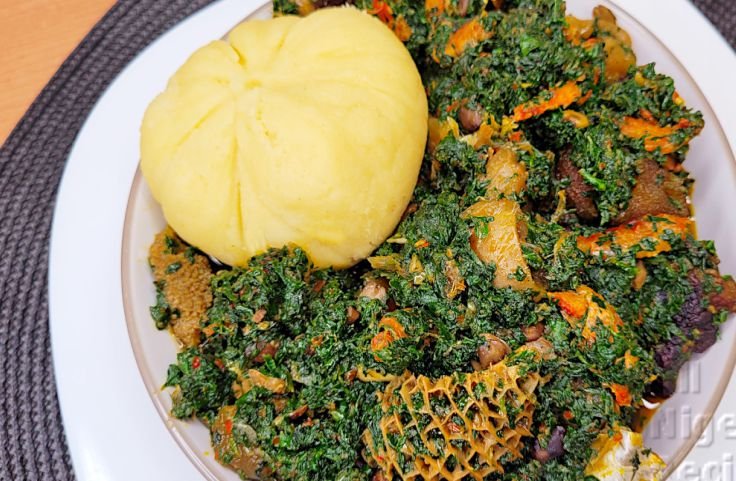
Garri is made from fresh cassava that’s peeled, washed, and grated into a mash.
The grated cassava is placed in a porous bag and left to ferment for 2 to 5 days, depending on preference.
After fermentation, the excess liquid is pressed out, and the mash is sieved to remove lumps.
It’s then roasted in a wide pan over medium heat until dry and crisp. The result is garri granules, light, sour, and ready to eat.
You can enjoy garri in two ways: soak in cold water with sugar, milk, and peanuts as a cereal, or stir into boiling water to make eba, a firm swallow served with African soups. It’s a key cassava recipe across West Africa.
Fufu with Soups
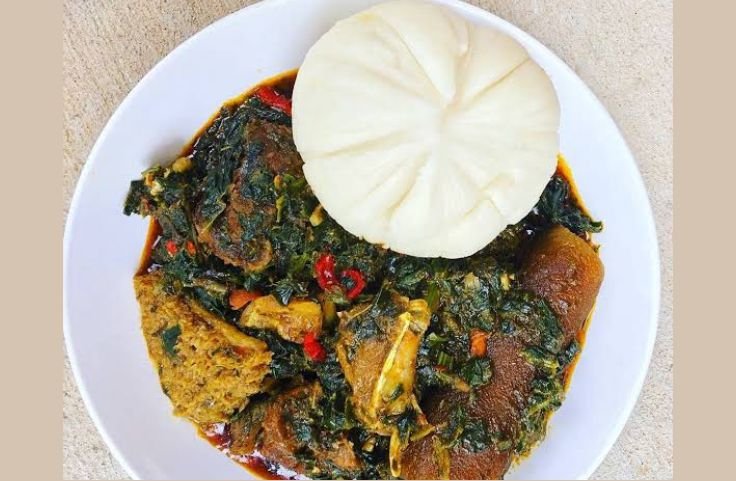
Cassava fufu is a smooth, stretchy staple made from cassava root or cassava flour.
For traditional fufu, peel and boil fresh cassava until soft. Then pound or blend the boiled cassava until it becomes a smooth, stretchy dough.
If using cassava flour, boil water and slowly stir in the flour until it thickens and forms a lump-free, elastic texture.
Stir continuously to prevent lumps and get the right consistency.
Once ready, mold fufu into small portions and serve warm with soups like egusi, ogbono, or okra. It’s a filling, gluten-free cassava recipe enjoyed across West and Central Africa, especially in Nigeria and Ghana.
Fufu is all about the texture, smooth, soft, and perfect for scooping up rich, flavorful soup.
Cassava Starch with Soups
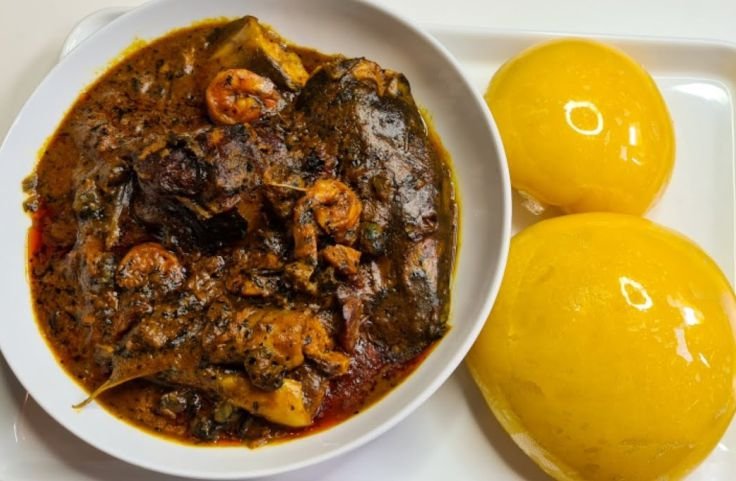
Cassava starch swallow, locally called “starch,” is a soft, stretchy meal enjoyed with rich soups like banga or owo.
It’s made using wet cassava starch (not flour), which is usually pale or slightly yellow.
To prepare, mix the starch with water in a pot over medium heat and stir constantly.
As it heats, it thickens and turns translucent and elastic. Some add a little palm oil for color and extra flavor.
It’s ready when smooth, stretchy, and lump-free.
This traditional cassava recipe is light but filling and pairs well with bold, oily soups.
Unlike fufu, it has a shiny, almost jelly-like look and a slightly chewy texture that holds up well to rich sauces. Serve warm in small scoops.
Related Posts
Cassava Nutritional Information
Vegan Cassava Flour Pancake Recipe
Cassava Root Recipes for Weight Loss
How to Make Boba Pearls Without Tapioca Starch
12 Cassava Food from Latin America
A peek into Cassava-based Foods Around the World
Boiled and Steamed Cassava Recipes
If you’re looking for easy ways to enjoy cassava, boiled and steamed cassava recipes are a great starting point.
These cooking methods soften the root, highlight its natural flavor, and work well in both sweet and savory meals.
Whether served plain, paired with sauce, or mashed into patties, cassava turns simple prep into satisfying food.
Boiled Cassava with Sauce or Stew

Boiled cassava with sauce or stew is one of the classic cassava recipes enjoyed in many homes, especially across West Africa.
The process is simple: peel the cassava, cut it into chunks, and boil until soft and fork-tender.
Once cooked, it becomes the perfect base for soaking up rich sauces.
Spicy tomato blends, palm oil stews, or vegetable-based sauces all work beautifully with the mild, earthy flavor of cassava.
This dish is naturally gluten-free, filling, and great for sharing with family or serving as part of a larger meal.
It’s also easy to season and customize to your taste.
If you’re looking for a budget-friendly cassava recipe that delivers comfort and flavor, this one belongs on your table. Go to Boiled Cassava
Related: How to Make Cassava Tortillas from Boiled Cassava Roots
Cassava Porridge
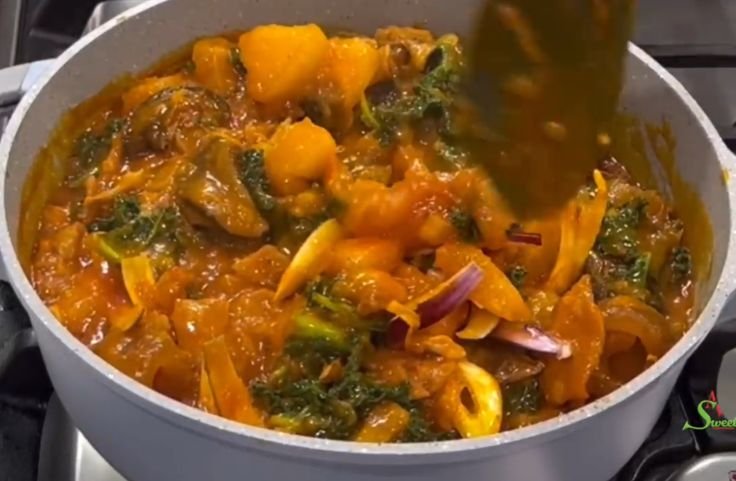
Cassava and coconut porridge is creamy and comforting. One of the cassava recipes that is perfect for breakfast or a warm evening meal.
Made by slowly cooking grated or mashed cassava in rich coconut milk, it delivers a smooth texture and gentle sweetness.
You can season it with salt for a savory version or add sugar, cinnamon, or nutmeg for a more traditional breakfast dish.
Popular in Caribbean and African kitchens, this porridge is naturally dairy-free, gluten-free, and satisfying.
It’s easy to make, gentle on the stomach, and holds well for reheating.
Top it with sliced bananas, berries, or toasted coconut flakes, or enjoy it plain and hot.
Steamed Cassava with Palm Oil Dip
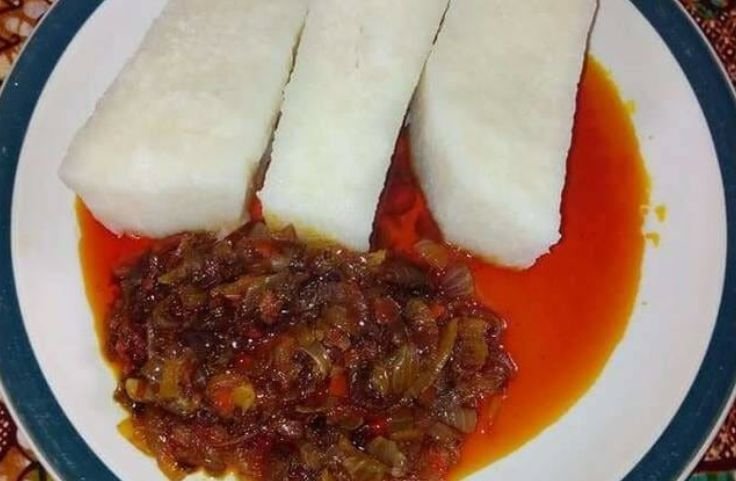
Steamed cassava with palm oil dip is a bold and simple cassava recipe that brings both texture and flavor to the table.
Steamed instead of boiled, the cassava holds more bite and pairs perfectly with the rich, spicy dip.
The dip is made by mixing palm oil with salt, chopped onions, crushed chili peppers, and sometimes ground crayfish or local spices like uziza.
This combo is popular across West Africa as a quick meal or hearty snack. It’s easy to prepare but full of character.
Serve the cassava warm, dip generously, and enjoy each spicy, starchy bite.
If you’re after a satisfying cassava recipe with minimal prep, this one’s a strong choice.
Cassava Dumplings: Caribbean Style

Cassava dumplings are a traditional Caribbean cassava recipe known for their dense, chewy texture that holds up well in soups and broths.
Made from grated cassava, a little flour, and salt, the dough is shaped and boiled until firm.
They’re commonly added to fish broth, vegetable soup, or spicy stews as a gluten-free alternative to wheat dumplings.
Some versions include herbs, garlic, or pepper for an extra kick.
These dumplings soak up the flavors of the dish without falling apart and make every bite more satisfying.
If you want a filling, time-tested cassava recipe that’s simple to prepare and rich in cultural roots, this one is worth trying.
Related: Crispy Baked Yuca Fries Recipe
Cassava Leaves Recipes
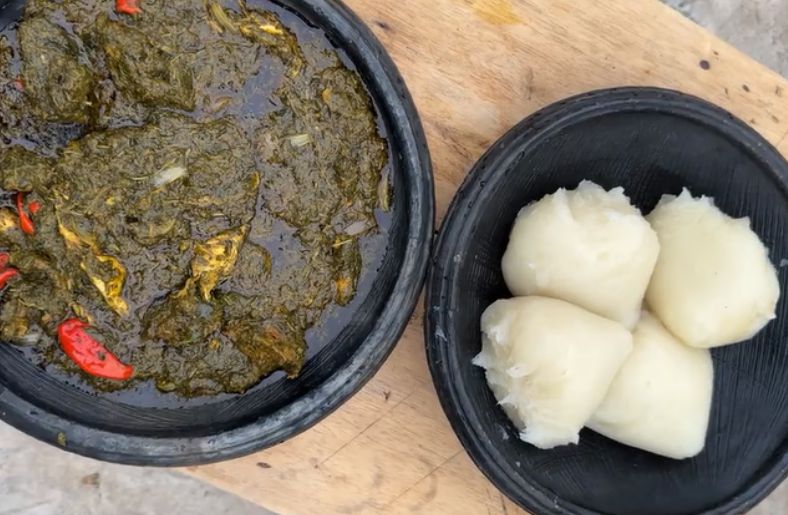
Cassava leaves are used in several African cuisines to create rich, earthy dishes full of flavor and nutrition.
Common in countries like Sierra Leone, Liberia, DR Congo, and parts of Nigeria, cassava leaves are usually pounded or finely chopped, then cooked slowly with ingredients like palm oil, onions, pepper, groundnut paste, and assorted meats or fish.
The result is a thick, savory sauce served over rice, yam, or fufu. Some versions include coconut milk for added depth.
These recipes are hearty and packed with iron, fiber, and plant-based goodness.
If you’re curious about cassava beyond the root, this is a great place to start. See a dedicated post on cassava leaves recipes.
Related: How to Make Grated Cassava Pancakes
Fried Cassava Recipes
If you enjoy bold flavor with a crispy bite, fried cassava will keep you coming back.
These recipes use simple steps and common oils to create deeply satisfying dishes.
Cassava Fries: with seasoning variations
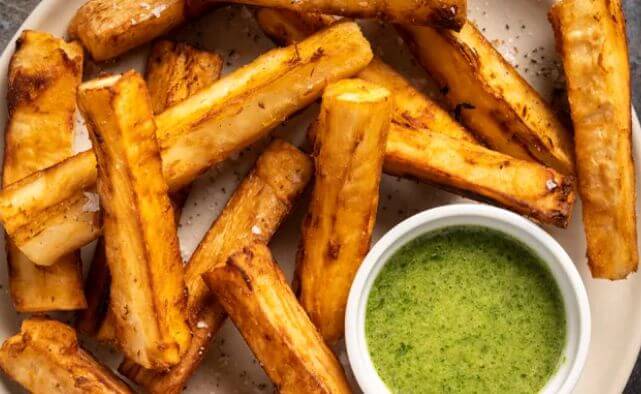
Cassava fries are a bold and satisfying cassava recipe that delivers crisp edges and a fluffy center.
Start by peeling and cutting the cassava into thick sticks, then boil until just tender.
After draining, fry them in hot palm oil, groundnut oil, or vegetable oil until golden and crisp.
They hold their shape well and have a richer bite than potato fries. Season simply with salt or go bold with chili flakes, garlic powder, or onion powder.
Serve them hot with spicy mayo, ketchup, or pepper sauce. These fries work as a snack, appetizer, or side dish.
If you’re craving something hearty and easy to season your way, this cassava recipe is worth adding to your list. Go to Cassava Fries for the full recipe.
Cassava Chips: sweet and savory versions
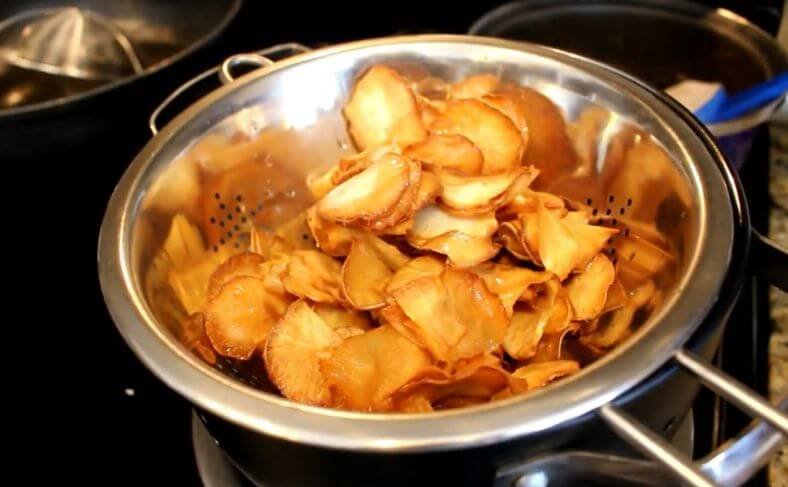
Cassava chips are a crispy, crave-worthy cassava recipe perfect for anytime snacking.
Slice the cassava as thinly as possible, using a mandoline helps, then fry in hot oil until golden and curled.
Let them drain on paper towels, then season while still warm.
You can keep it classic with salt or go creative with chili powder, garlic, barbecue seasoning, or even a sweet cinnamon-sugar mix.
These chips store well in airtight containers, making them ideal for meal prep, lunchboxes, or party bowls.
They’re naturally gluten-free, full of crunch, and easy to flavor your way.
If you’re tired of store-bought crisps, this cassava recipe gives you a fresher, heartier, and more satisfying snack. Go to Cassava Chips for the full recipe.
Yuca Fritters: also called Akara Cassava
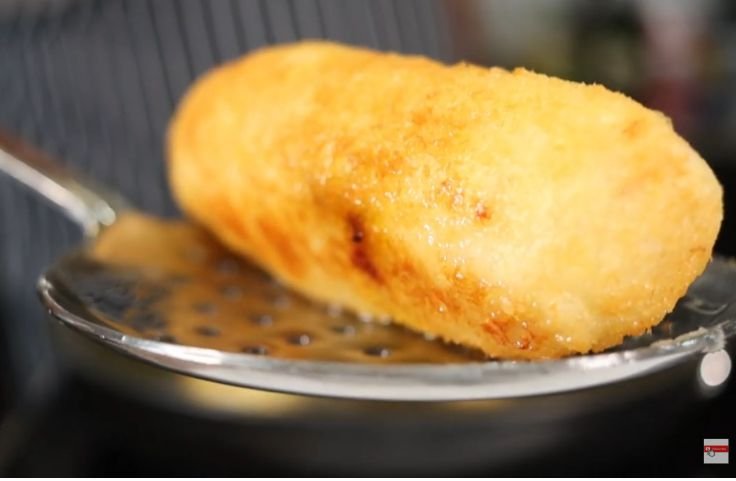
Yuca fritters, also known as akara cassava, are a savory cassava recipe made with grated cassava, chopped onions, scotch bonnet pepper, and salt.
The mixture is shaped into small balls or patties, then deep-fried until golden brown, crisp on the outside and tender inside.
Popular in West African kitchens, they’re commonly served for breakfast or as an evening snack alongside pap, akamu, or spicy dipping sauces.
The cassava adds a mild, earthy base while the pepper brings a warm heat.
They’re naturally gluten-free and easy to prep. If you like akara or bean fritters, this cassava recipe offers a tasty variation using the same familiar technique.
Deep-Fried Fermented Cassava Balls
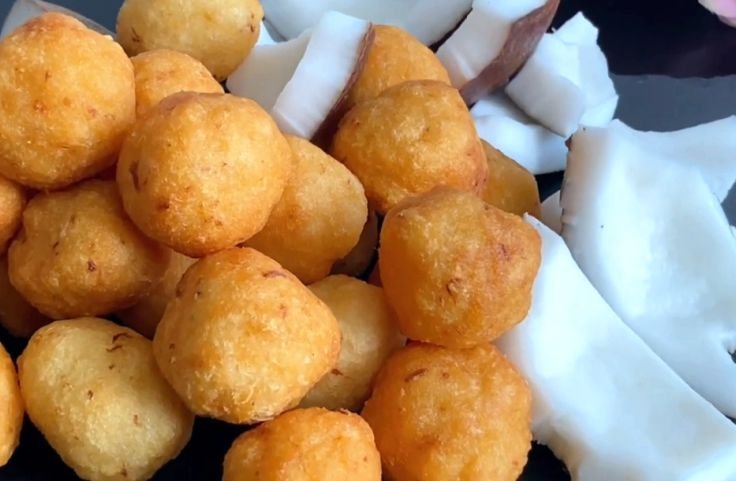
Deep-fried fermented cassava balls are a bold, flavor-rich cassava recipe with a tangy twist.
You start by fermenting grated cassava until it develops a slightly sour taste, then shape the mixture into balls and fry until crisp and golden.
The outside becomes crunchy, while the inside stays soft and warm.
This snack is popular in many regions as a street food or light meal and pairs well with spicy sauce or seasoned palm oil dips.
The fermentation gives the cassava a deeper flavor that’s unlike anything you get from fresh or boiled versions.
If you’re looking for a cassava recipe that’s traditional, easy to make, and full of character, this one is a must-try.
Related: How to Make Cuban Style Yuca Fries
Baked Cassava Dishes
If you’re looking for healthier alternatives to frying, baking with cassava gives you filling meals and snacks without extra oil.
These dishes work well for everyday meals or special occasions.
Cassava Cake: Filipino or African style
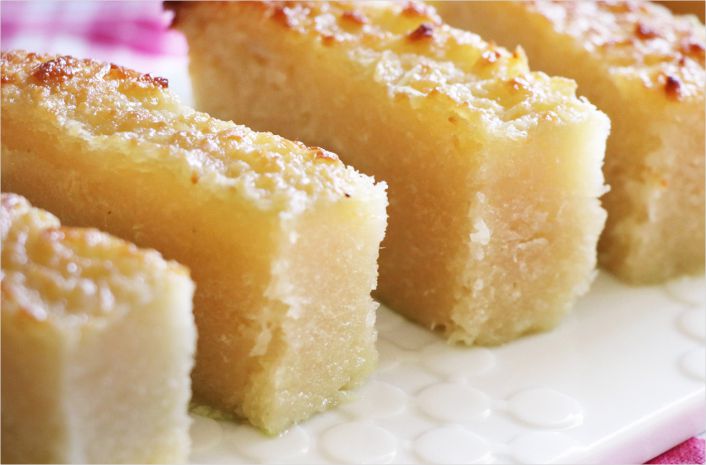
Cassava cake is a moist, satisfying cassava recipe enjoyed in both Filipino and African kitchens.
The Filipino version blends grated cassava with coconut milk, condensed milk, and eggs, then bakes it to a golden finish with a creamy topping.
In many African homes, the cake is simpler, just cassava, sugar, and a bit of oil or butter, sometimes with coconut.
You can adjust the sweetness or texture to your liking. The result is a soft, chewy treat that’s rich but not too heavy.
It’s perfect as a dessert, a tea-time snack, or something to share at family gatherings.
If you enjoy baked treats with texture and depth, this cassava recipe is one you’ll want to keep. Go to Cassava Cake for the full recipe.
Baked Cassava Pie
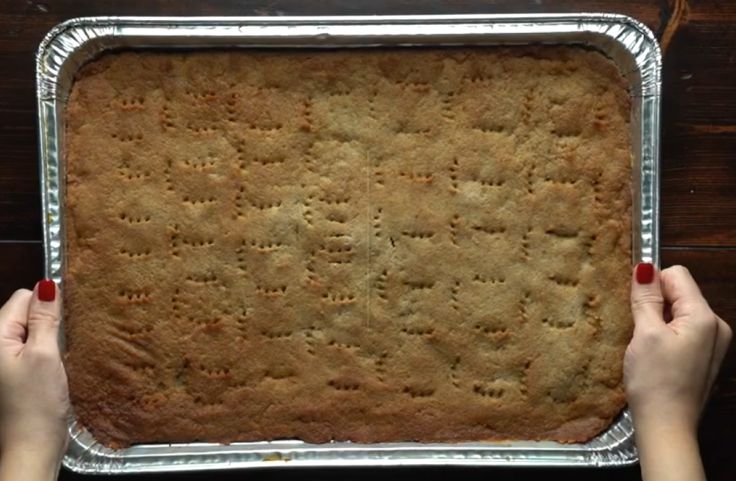
Baked cassava pie is a hearty cassava recipe that swaps flour for mashed or grated cassava, creating a chewy crust that bakes up firm and golden.
The pie is layered with spiced meat, vegetables, or a mix of both, then seasoned with garlic, herbs, onions, and peppers for depth and warmth.
Popular in Caribbean homes during holidays, it’s just as good for weeknight dinners when you want something filling and flavorful.
The cassava holds everything together and adds a slightly earthy taste that pairs well with bold fillings.
Serve it hot with a side salad or vegetables. If you want a gluten-free twist on a classic comfort meal, this cassava recipe is one to keep in rotation.
Go to Baked Cassava Pie for the full recipe.
Cassava Lasagna: Low-Carb Version
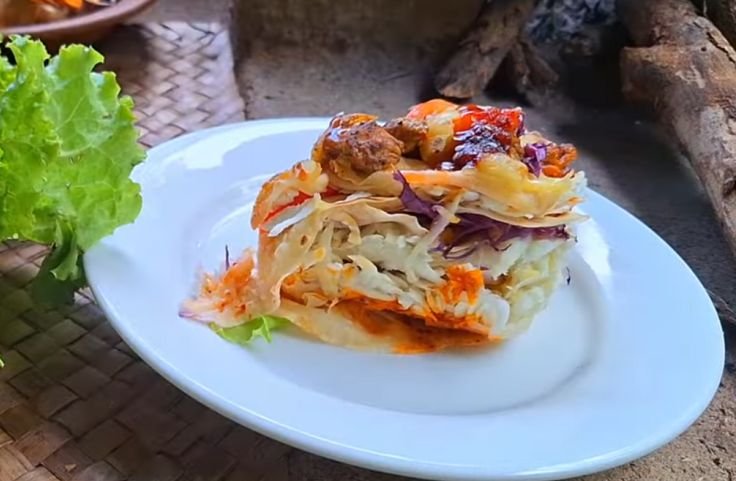
Cassava lasagna is a creative cassava recipe that swaps pasta sheets for thin layers of boiled or grated cassava.
You build it just like classic lasagna, layering with tomato sauce, ground meat or mushrooms, and your choice of cheese or plant-based alternatives.
Once baked, it holds its shape, slices cleanly, and delivers a chewy, comforting bite.
This dish is ideal for low-carb, gluten-free, or grain-free diets, offering all the satisfaction of lasagna without the wheat.
The cassava keeps the layers intact without turning soggy, making it easy to prep ahead and enjoy throughout the week.
If you’re craving comfort food that fits into more eating styles, this cassava recipe is a flavorful and reliable alternative.
Cassava Bread: Baked Loaf Version
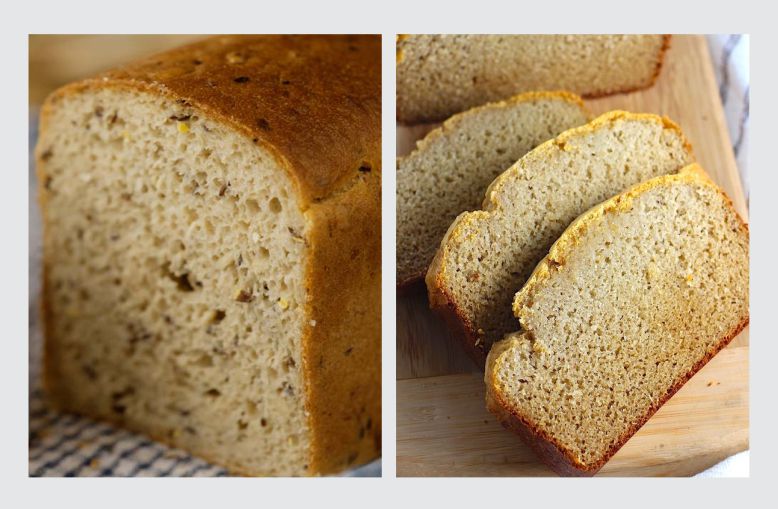
Cassava bread is a hearty cassava recipe baked in loaf form, offering a dense, chewy bite that’s naturally gluten-free.
You can make it with cassava flour or grated cassava, mixed with oil, eggs, and optional add-ins like garlic, herbs, or seeds.
Once baked, the loaf develops a firm crust with a soft center, perfect for slicing and pairing with soups, stews, or spreads.
Some versions lean savory, while others are slightly sweet, depending on how you season the mix.
It keeps well, toasts nicely, and makes a satisfying option for breakfast, lunch, or snacks.
If you’re avoiding wheat or looking for a rustic, filling bread alternative, this cassava recipe is simple, dependable, and worth baking again. Go to Cassava Bread for the full recipe.
Related: Guide to Tapioca Pudding Recipes
Cassava Flour Recipes
You’re about to try cassava flour in ways that go beyond the usual. It’s grain-free, gluten-free, and works great in both sweet and savory recipes.
Cassava Flour Pancakes
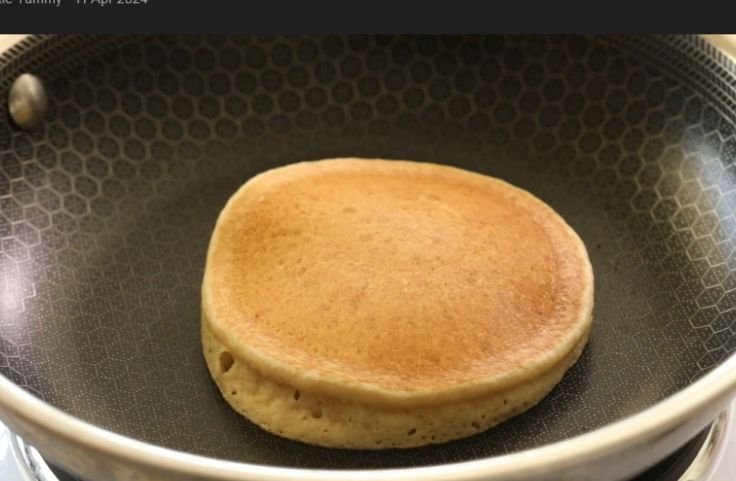
These cassava flour pancakes are a reliable cassava recipe for anyone looking to enjoy a light, fluffy, and gluten-free breakfast.
The flour holds its texture on its own; no blending with other flours needed. You can use eggs or go vegan with mashed bananas or flaxseed meal.
The batter mixes fast and cooks evenly in a nonstick pan, making it great for busy mornings.
Add cinnamon, vanilla, or fresh berries for extra flavor. They freeze and reheat well, so you can prep ahead and enjoy them anytime.
Whether topped with nut butter, fruit, or maple syrup, these pancakes deliver a warm, satisfying start to your day. Go to Cassava Flour Pancake Recipe for the full recipe.
Cassava Tortillas
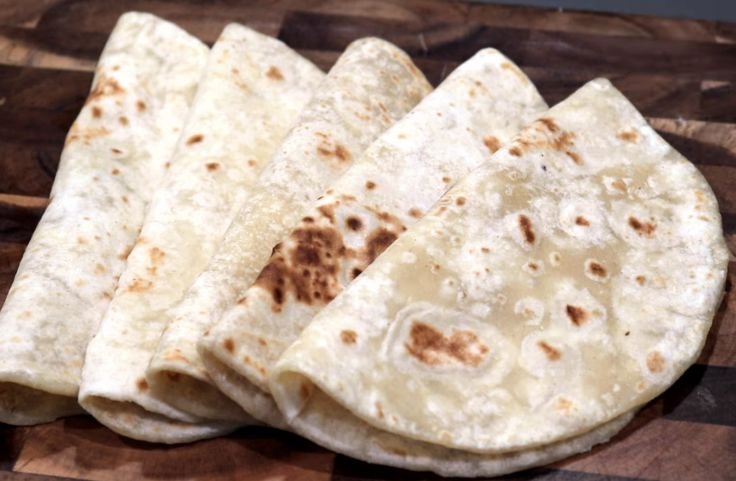
Cassava tortillas are a soft, flexible cassava recipe that comes together with just cassava flour, water, salt, and oil. No yeast, no rising time, just mix, roll, and cook in a dry pan.
They puff slightly when heated and bend without cracking, making them perfect for tacos, wraps, burritos, or quesadillas.
The dough is smooth and easy to work with, even for beginners. These tortillas are ideal if you’re avoiding wheat or corn and still want a sturdy, flavorful wrap.
They pair well with savory or spicy fillings and store well in the fridge for later use.
If you need a gluten-free option that’s reliable and quick, this cassava recipe is worth adding to your regular meal prep. Go to Cassava Flour Tortillas for the full recipe.
Paleo Cassava Waffles

Paleo cassava waffles are a satisfying cassava recipe for anyone avoiding grains or following a paleo lifestyle.
They come out crisp on the outside and soft in the middle, just like classic waffles.
The batter is quick to mix and works in any standard waffle iron. Use eggs or a flaxseed mix to bind the cassava flour, and add nut milk or a bit of oil for moisture.
Flavor them with cinnamon, vanilla, or cocoa powder if you like variety.
These waffles freeze well and pop back to life in a toaster, making them perfect for meal prep.
Whether it’s breakfast, brunch, or dessert, this cassava recipe gives you the texture and taste you’ve been missing.
Also see vegan cassava waffles without eggs.
Cassava Flatbread
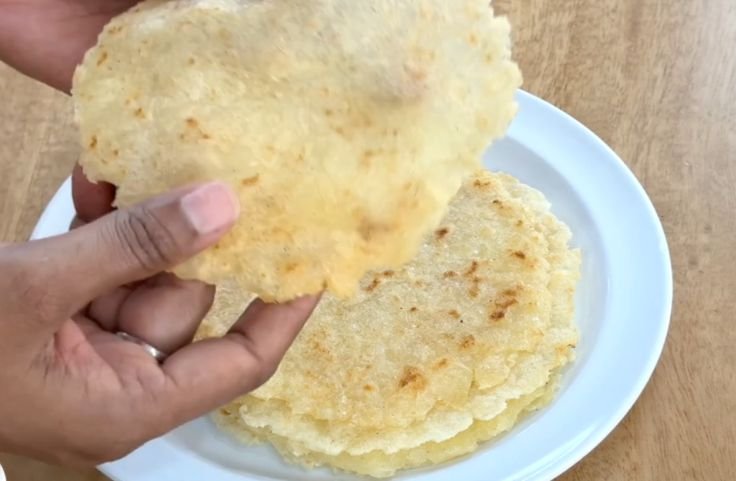
Cassava flatbread is a simple, flexible cassava recipe that’s soft, chewy, and ready in minutes.
You only need cassava flour, warm water, oil, and salt, no yeast, no long wait.
The dough mixes easily and can be rolled thin for wraps or left slightly thick for a heartier bite.
Cook it in a skillet until golden spots appear, and you’ve got a bread that bends without breaking.
Use it as a wrap, a pizza base, or alongside soups and dips. It stays soft even after cooling and reheats well for later meals.
If you’re looking for a grain-free bread that’s quick and dependable, this cassava recipe delivers a homemade feel with better texture than most store-bought options.
Keto Cassava Flour Bread
Keto cassava bread is a low-carb cassava recipe made by combining cassava flour with ingredients like eggs, psyllium husk, or coconut flour to reduce net carbs while keeping a soft texture.
The result is a loaf with a golden crust, a fluffy center, and slices that hold up for sandwiches, toast, or dipping.
It’s gluten-free, grain-free, and easy to make, dairy optional.
You get the comfort of bread without the usual starch load. It toasts well, stores neatly, and satisfies that bread craving on a keto lifestyle.
If you’re looking for a clean, reliable loaf that fits into low-carb meals, this cassava recipe is a strong option. Go to Keto Cassava Bread Recipe for the full recipe.
Cassava Dessert Recipes
Cassava’s natural starchiness makes it a perfect base for creamy, chewy, and rich desserts.
If you’re craving something sweet, cassava gives you comfort without the gluten or grains.
Cassava Pudding and Tapioca Pudding
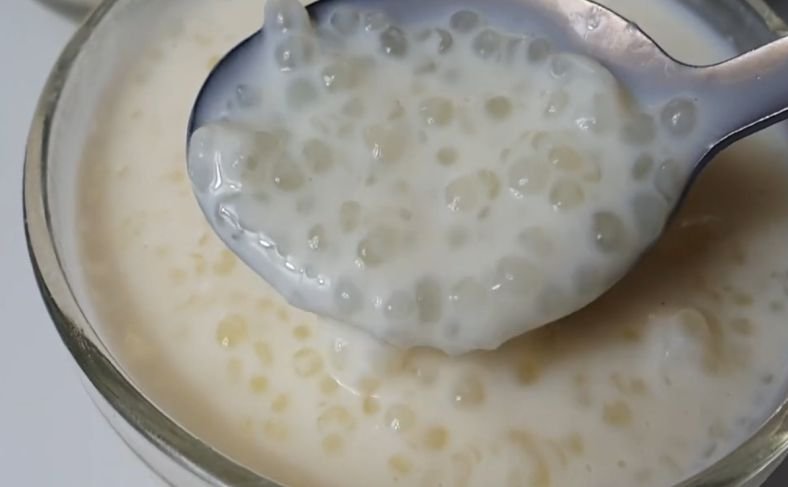
Cassava pudding is made by grating fresh cassava and mixing it with coconut milk, sugar, melted butter, and spices like nutmeg and cinnamon. Some recipes include eggs or vanilla for extra richness.
The mixture is poured into a greased baking dish and baked until firm and golden brown.
The result is a dense, moist pudding that can be sliced and served warm or cold. It’s a traditional dessert in many Caribbean and African homes, and a popular cassava recipe for those who enjoy baked root-based treats.
Tapioca pudding, though also cassava-based, uses tapioca pearls, starch extracted and formed into small balls.
These are soaked, then simmered in milk (or coconut milk) with sugar and sometimes eggs for a custard-like texture.
Vanilla is commonly added for flavor. It’s cooked on the stovetop and served as a spoonable dessert.
While both come from cassava, cassava pudding uses the whole root and is baked, while tapioca pudding uses the starch and is gently simmered.
Sweet Cassava Balls in Coconut Milk
Sweet cassava balls in coconut milk offer a chewy, creamy cassava recipe that’s both comforting and fun to eat.
You start by grating cassava and mixing it with sugar to form a sticky dough. Shape the dough into small balls, then steam until firm.
Once cooked, they’re simmered in coconut milk until the sauce thickens and lightly coats each ball.
The texture is soft and bouncy, with just enough sweetness to feel indulgent without being too rich.
This dessert is naturally gluten-free, easily made vegan, and can be customized with pandan, sesame seeds, or a splash of vanilla.
Serve it warm or cold as a tropical treat that’s simple, satisfying, and full of homemade charm.
Cassava Mochi
Cassava mochi is a chewy, stretchy cassava recipe that gives you the classic mochi feel, without any rice flour.
It’s made with cassava flour or starch mixed with sugar and coconut milk, then baked or steamed depending on the texture you want.
Steamed versions are soft and elastic all over, while baking gives the outside a slight crisp.
You can add flavors like ube, cocoa powder, or fruit purée for variety and color.
This dessert is grain-free, naturally gluten-free, and works well as a dairy-optional option.
It’s also great for storing, just slice and refrigerate for later snacking.
If you’re craving something simple with a bouncy texture, this cassava recipe is a creative and delicious option.
Baked Cassava Brownies

Baked cassava brownies are a decadent cassava recipe that gives you rich chocolate flavor and chewy texture without wheat flour.
The batter comes together quickly using cassava flour, cocoa powder, eggs, oil or butter, and your preferred sweetener.
The result is a moist, fudgy brownie with a slightly chewy bite, thanks to cassava’s natural starch.
These brownies don’t need any gums or added binders, making them feel both wholesome and indulgent.
You can mix in chocolate chips, swirl in nut butter, or add a sprinkle of sea salt for more depth.
They’re grain-free, gluten-free, and easy to adapt to dairy-free or low-sugar versions.
If you’re after a clean, satisfying dessert, this cassava recipe is worth baking. Go to Baked Cassava Brownies for the full recipe.
Cassava and Banana Pudding

Cassava and banana pudding is a thick, creamy dessert that blends grated cassava and mashed bananas into a tropical treat.
Coconut milk adds richness while the cassava’s starch thickens the mixture as it simmers.
The ripe bananas bring natural sweetness and a smooth finish.
It can be enjoyed warm or cold, and holds up beautifully when chilled.
For added flavor, mix in cinnamon, nutmeg, or vanilla. This pudding is naturally gluten-free, grain-free, and uses ingredients that are easy to find.
It’s a filling, no-fuss dessert you can enjoy anytime. If you want a sweet treat that’s gentle on your stomach and doesn’t take much effort, this cassava recipe is a solid choice.
Cassava Snacks
Cassava isn’t just for meals and desserts. It shines in quick bites, street food, and easy snacks you can prep ahead or enjoy on the go.
Cassava Stick Snacks / Tapioca Sticks
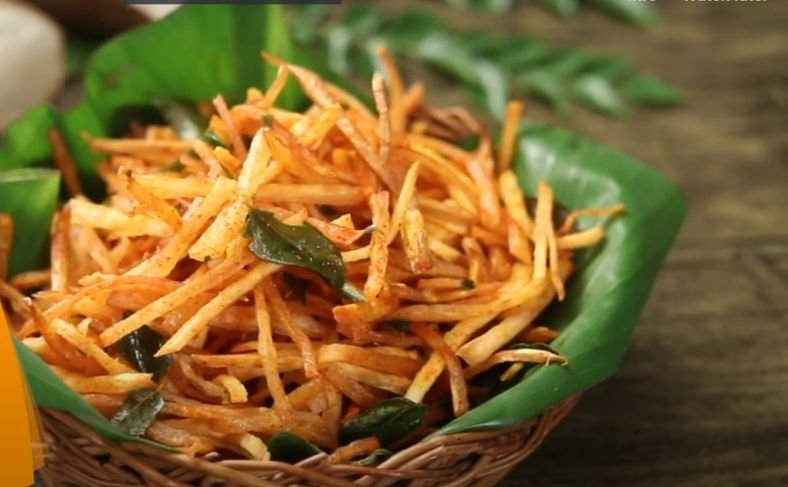
Cassava stick snacks are a crispy cassava recipe that hits the spot when you’re craving something crunchy, salty, and satisfying.
Start with fresh cassava: peel, slice into thin strips, and boil just until slightly tender.
Then fry until the edges puff and the outside turns golden and crisp.
You can season them simply with salt or add paprika, chili, or garlic for extra kick.
They’re firmer than regular fries and hold up well with dips, spreads, or on their own. Prefer baked snacks?
Toss them in oil and roast until golden. These snacks are great for sharing, packing in lunchboxes, or keeping on hand for quick bites.
If you’re after an easy, crave-worthy cassava recipe, this one is always a hit.
Go to Cassava Stick Snacks Recipe for the full recipe.
Tapioca Balls (Savory Version)

Savory tapioca balls are a chewy cassava recipe made with tapioca starch, hot water, and seasonings to create a smooth, stretchy dough.
Once shaped, the balls can be filled with cheese, herbs, or minced meat and then either baked or fried.
The outside turns golden and crisp while the inside stays soft and chewy.
These are naturally gluten-free and common in South American kitchens, where they’re served as snacks or party bites.
You can adjust the flavors to suit your style, and they’re perfect with dips or sauces on the side.
They’re easy to prep and cook fast, so they’re great when you want something hot and handheld.
This cassava recipe brings a chewy, savory bite that’s fun to eat.
Go to Savory Tapioca Balls Recipe for the full recipe.
Fermented Cassava Crackers
Fermented cassava crackers are a crispy cassava recipe with a tangy twist and deep, layered flavor.
To make them, you ferment grated cassava for a few days until it develops a slight sourness.
Then, press out the moisture, shape the dough, and dry it in thin rounds.
Once dried, the crackers are either fried or baked until they puff and crisp.
The fermentation gives them a unique bite you won’t get from regular chips or store-bought crackers.
You can season them with garlic, herbs, or chili flakes before drying for a bolder flavor.
They pair well with dips or cheeses, or you can eat them on their own.
This cassava recipe is ideal for snackers who love flavor and crunch.
Mini Cassava Pockets with Filling
Mini cassava pockets are a fun, savory cassava recipe that works as a snack or light meal.
The dough is made with grated or mashed cassava and formed into small discs.
Fill them with spiced ground meat, sautéed vegetables, or shredded cheese, then fold and seal the edges.
You can bake or fry them until golden and slightly crisp. The shell stays soft with a chewy bite, while the inside stays warm and flavorful.
These pockets are easy to freeze and reheat without losing texture, making them perfect for meal prep.
Serve them on their own or with a simple dipping sauce.
If you want something warm, portable, and packed with flavor, this cassava recipe is a reliable go-to.
Abacha (African Salad)

Abacha, also known as African salad, is a traditional cassava recipe popular in Enugu and other parts of southeastern Nigeria.
It’s made by boiling peeled cassava tubers until soft, then slicing them thinly and soaking them in cold water to soften further.
Once rehydrated, the cassava strips are drained and mixed with a flavorful palm oil dressing made with potash (akanwu), ground crayfish, pepper, sliced onions, and ogiri (fermented locust beans).
Extras like garden eggs, uziza leaves, fish, kpomo, or stockfish can be added for taste and texture.
Served cold, Abacha is both a snack and a light meal. It’s tangy, spicy, and deeply rooted in Igbo food culture, often enjoyed at gatherings and festive occasions.
Drinks & Fermented Cassava Recipes
Cassava isn’t only for solid meals; it plays a big role in traditional drinks, fermented brews, and chewy add-ins for modern beverages, too.
Cassava Juice (Raw or Cooked)
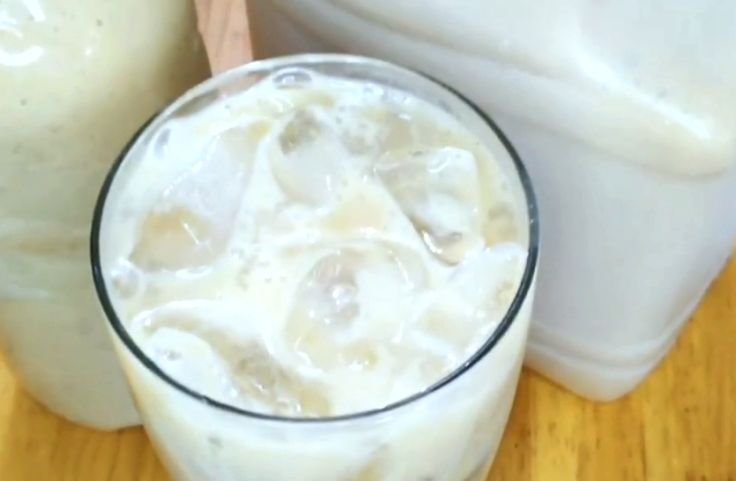
Cassava juice is a traditional cassava recipe you can prepare raw or cooked, depending on the variety and how you plan to enjoy it.
Raw juice is made by grating fresh cassava and squeezing out the liquid, which is then filtered and sometimes left to settle.
This method is deeply rooted in tradition, but it’s only safe with sweet cassava varieties that are low in toxins.
Cooked cassava juice is a safer and more modern twist.
You boil the root, blend it with water or coconut milk, and sweeten with sugar, honey, or fruit. It turns thick and creamy, almost like a smoothie.
Add ginger, vanilla, or citrus to bring it to life.
This cassava recipe is great when you want a rich, cultural drink.
Cassava Beer or Traditional Ferments
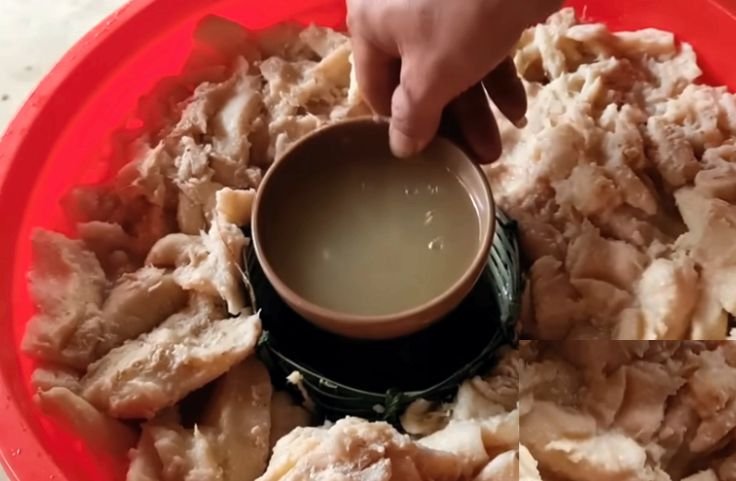
Cassava beer is a fermented cassava recipe passed down across generations and still shared today in communal settings.
Made by boiling or grating cassava, mixing it with water, and allowing it to ferment naturally, this beverage becomes slightly sour, gently fizzy, and low in alcohol.
In some areas, like parts of Africa and South America, enzymes are activated by chewing the cassava pulp before fermentation begins.
While this may sound unusual, it’s part of ancient brewing traditions.
The finished drink is often served during celebrations, rituals, or shared gatherings.
It’s not only about taste but about heritage and togetherness.
Try this cassava recipe if you want a traditional, fermented drink that connects you with time-tested food culture.
Brazilian Caxiri or Chicha
Brazilian caxiri and South American chicha are fermented cassava recipes rich in cultural roots and ceremonial value.
Both drinks begin with cooked cassava mixed with water and left to ferment over several days.
Caxiri is common among Indigenous Brazilian communities, while chicha takes different forms across countries like Peru, Colombia, and Ecuador.
Some versions of chicha are sweetened with fruits to balance the sour kick from fermentation.
The final drink is mildly alcoholic, slightly fizzy, and enjoyed during social gatherings or spiritual events.
These drinks rely on time, clean tools, and simple ingredients.
If you enjoy experimenting with ancestral recipes and fermentation, this cassava recipe offers a rewarding and flavorful result that honors traditional brewing.
Homemade Tapioca Boba Pearls

Homemade tapioca boba pearls are a fun cassava recipe that gives you chewy, glossy pearls for bubble tea made right in your kitchen.
Tapioca starch, which comes from cassava, is mixed with hot water to form a smooth dough.
You roll it into small balls, boil them until translucent, then soak them in sweet syrup or honey.
These pearls are naturally gluten-free, bouncy, and perfect for cold drinks like milk tea or fruit tea.
You can color them using natural ingredients like beet juice or matcha.
Whether you enjoy bubble tea regularly or want a DIY project, this cassava recipe gives you full control over ingredients and freshness. It’s chewy, sweet, and completely satisfying.
Go to Homemade Tapioca Boba Pearls Recipe for the full recipe.
Vegan & Gluten-Free Cassava Recipes
Cassava fits perfectly into plant-based and gluten-free cooking. It’s easy to work with, naturally allergen-friendly, and a great choice when you want simple meals without compromise.
Vegan Cassava Pancakes
Vegan cassava pancakes are a soft, filling cassava recipe made without eggs, dairy, or gluten.
Thanks to cassava flour’s natural binding power, you won’t need extra gums or complicated mixes.
Just combine cassava flour, mashed banana or flaxseed meal, baking powder, and your favorite plant milk.
The batter is smooth and easy to work with, and the pancakes cook up golden and fluffy.
Serve with maple syrup, berries, nut butter, or dairy-free yogurt.
They’re great for a quick breakfast, leisurely brunch, or even a make-ahead snack.
They also freeze and reheat well. If you want a plant-based cassava recipe that’s reliable and flavorful, this one gives you everything you love about pancakes in a cleaner, allergy-friendly form.
Gluten-Free Cassava Pizza Base
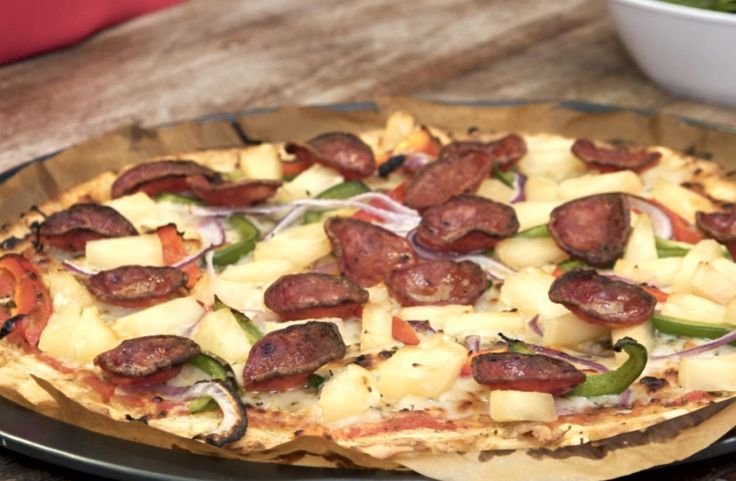
This gluten-free cassava recipe makes a chewy, golden pizza base with clean, simple ingredients.
All you need is cassava flour, water, a bit of oil, and salt. Mix into a dough, roll it out, and bake, it’s that easy.
Add garlic powder or herbs to the dough for extra flavor.
Once baked, it slices cleanly, holds toppings without getting soggy, and has a crisp edge with a soft center.
It works for vegan or dairy-free diets, depending on your choice of toppings. Try tomato sauce, sautéed vegetables, or even plant-based cheese.
You can freeze it or use it as a meal prep base.
This cassava recipe brings real crust satisfaction without the gluten, grains, or processed binders.
Cassava Veggie Patties
Cassava veggie patties are a wholesome cassava recipe that’s completely plant-based and packed with texture.
You use grated cassava as the base and binder, mixing it with finely chopped vegetables, herbs, and seasonings like garlic or cumin.
Shape into small patties and pan-fry until golden and crisp outside.
The interior stays soft, rich, and full of flavor. You don’t need flour, eggs, or dairy; cassava holds everything together naturally.
Serve them with dipping sauces like vegan mayo, tahini, or avocado dip.
They work great as snacks, burger patties, or side dishes and hold up well in lunchboxes.
If you’re looking for a satisfying vegan cassava recipe that’s simple, flavorful, and easy to prep, these patties are the answer.
Vegan Cassava Nuggets
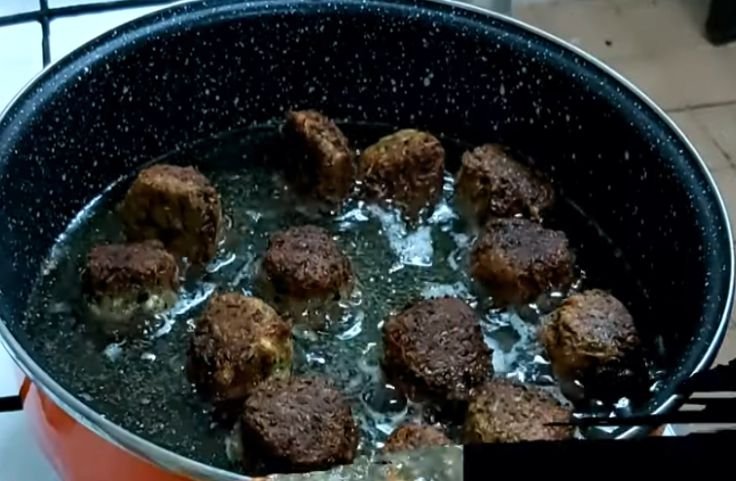
Vegan cassava nuggets are a fun and satisfying cassava recipe made with grated or mashed cassava and no animal products.
Mix the cassava with chopped veggies, garlic, and spices, then shape into bite-sized nuggets.
You can bake or pan-fry them until the outside is golden and crispy.
Thanks to cassava’s natural starch, the nuggets hold together well and stay soft in the middle without needing eggs or flour.
They’re ideal for dipping in sauces like spicy ketchup, vegan ranch, or garlic tahini.
Pack them in lunchboxes or serve as an appetizer at gatherings.
If you’re looking for a quick, plant-based cassava recipe that works for kids and adults alike, these nuggets are a tasty, no-fuss option.
Tips for Cooking with Cassava
Cassava is easy to use once you understand how to prep it. Get the most out of it with these key tips and avoid common mistakes along the way.
How to Prep Cassava and Remove Natural Toxins
Start by peeling off the thick brown skin and the pinkish-white layer underneath.
Cut into chunks and soak or rinse thoroughly. Always cook cassava before eating.
Raw cassava, especially the bitter kind, contains compounds that release cyanide.
These toxins break down during proper cooking. Boil, steam, or bake until soft, and never eat it raw or undercooked.
You can read more about cyanide in cassava and how to avoid toxicity in our full guide.
If you’re unsure of the variety, treat it like bitter cassava and boil first.
Good prep not only makes cassava safe, it also brings out its natural flavor and smooth texture.
Once you’ve done it a few times, it becomes second nature.
Fresh vs Frozen vs Flour: When to Use Each
Fresh cassava is best when you want full texture, think chunks in soups, fries, or grated snacks.
It holds moisture and gives a natural bite. Frozen cassava is pre-peeled and often parboiled, which saves time.
Use it when you’re short on prep time or want consistency.
Cassava flour works better for baking, thickening, or dough-based recipes like pancakes, flatbreads, or waffles.
Don’t confuse it with tapioca starch; they come from the same root but are processed differently.
Cassava flour uses the whole root and gives structure. Tapioca is refined and better for stretch or chew.
Learn more about cassava flour to match it properly with your recipes.
Choosing the right form depends on what you’re making and how much time you have.
Substitutions and Common Mistakes to Avoid
Cassava is flexible but not always a 1:1 swap. Replacing wheat flour with cassava flour works in some recipes, but not all.
Don’t expect yeast breads to rise the same without support from other flours.
For best results, pair cassava with almond, coconut, or arrowroot flours when baking.
Another common mistake is skipping the boiling step for fresh cassava; it must be fully cooked.
Avoid over-processing it in a blender, as it can turn gluey.
Also, don’t confuse cassava flour with tapioca starch in recipes, they behave differently.
If your dough feels too dry, add moisture slowly. If too sticky, let it cool or rest before shaping.
Understanding these small details helps you avoid waste and gives you better results every time.
Frequently Asked Questions about Cassava Recipes
What are easy cassava recipes I can try at home?
Find quick cassava recipes like yuca fries, puddings, or dumplings. Peel, boil, fry, or bake, simple kitchen steps, big flavor outcomes.
Are cassava recipes safe without fermentation?
Yes, if you peel fresh cassava and cook it thoroughly, harmful toxins break down. Baking or boiling ensures safety in all cassava recipes.
Can cassava recipes be gluten-free and paleo-friendly?
Absolutely. Cassava recipes with cassava flour or root suit gluten-free and paleo diets. Ideal for tortillas, cakes, and thickening sauces.
How do cassava recipes differ from tapioca recipes?
Cassava recipes use whole root or flour, giving dense texture. Tapioca recipes use extracted starch pearls for creamy puddings and thick sauces.
Can I use cassava recipes in savory dishes?
Yes, cassava recipes include stews, dumplings, and fries. You can boil, fry, or steam root for hearty soups and sides.
Do cassava recipes require special binding agents?
Most cassava recipes bind naturally with cassava flour. Some baked goods may need eggs or coconut cream for texture and moisture.
Conclusion
Cassava is more than a root. It gives you real options in the kitchen, from crispy fries and soft dumplings to thick stews and creamy puddings.
Its natural starch works well in both sweet and savory meals. Because it’s gluten-free, it fits into vegan, paleo, and low-carb diets without much effort. You’ll see cassava recipes in African soups,
Caribbean cakes and Filipino desserts, each with bold flavor and simple ingredients. When prepared the right way, cassava becomes safe, filling, and full of texture.
Whether you’re baking, boiling, frying, or steaming, you can find cassava recipes that suit your style.
Use it to shake up your weeknight cooking or to bring tradition to your table.
If you’re ready for something new that doesn’t feel complicated, cassava gives you that edge.
Try a few dishes and see how far one root can really go.
References
I am Chimeremeze, a certified cassava farmer, processor and exporter. Also a writer and researcher with deep-rooted experience in processing, consuming, and utilizing locally produced cassava products, including cassava flour, tapioca flour and starch, garri, fufu, fried cassava balls, abacha, cassava chips, and more. Growing up in a community where cassava farming is a way of life, we have mastered its cultivation, processing, and sustainability, making it an essential part of our heritage.
My passion for the cassava plant and its countless benefits drives my research and writing, shedding light on its significance to West Africa and beyond. I also explore the impact of palm oil, another cornerstone of African agriculture, and how it continues to shape economies, diets, and traditions across the continent and the world.

